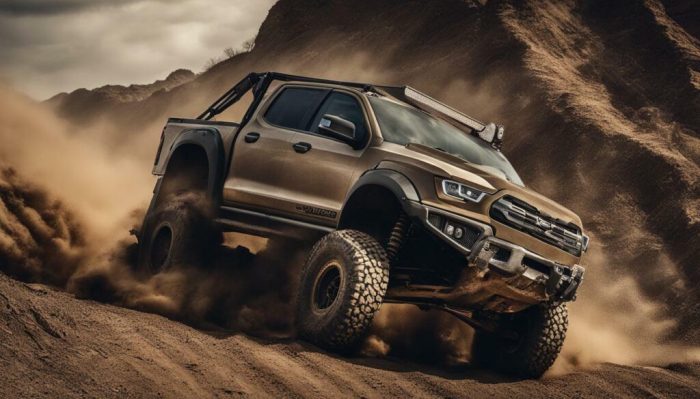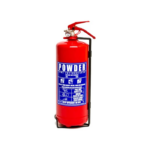How to reinforce a truck frame for off-roading? It’s a question every serious off-roader eventually grapples with. Taking your truck beyond the pavement means subjecting its frame to brutal forces – twisting, jarring impacts, and constant stress. This guide dives deep into the techniques and considerations for beefing up your truck’s chassis, ensuring it can handle whatever the trail throws at it.
We’ll cover everything from assessing your existing frame to selecting the right reinforcement materials and techniques, all while keeping safety and legality top of mind.
From identifying weak points and inspecting for damage to welding on steel plates and installing beefier axles, we’ll walk you through the entire process. We’ll also explore alternative reinforcement methods, discuss the importance of proper suspension upgrades, and delve into material selection, considering factors like strength, weight, cost, and corrosion resistance. Get ready to transform your truck into an off-road beast!
Assessing the Truck Frame

Before you even think about welding on extra steel, you need a thorough understanding of your truck’s frame. Knowing its strengths and weaknesses is crucial for effective reinforcement. A poorly planned reinforcement job can actually weaken the frame, so careful assessment is paramount. This involves inspecting the frame’s material, identifying potential weak points, and checking for existing damage.
Beefing up your truck frame for serious off-roading is key, and that means more than just bigger tires. You’ll need to consider frame reinforcements and, of course, keeping your engine running smoothly with the right fuel. Check out this article on Best diesel fuel additives for 2025 models to make sure your diesel is performing at its peak.
A strong engine is useless without a solid frame, so remember to prioritize both when prepping for your next adventure!
Potential Weak Points in Truck Frames
Typical truck frames, even those designed for off-road use, have inherent weak points. These are often areas subjected to significant stress during off-road driving, such as flexing, twisting, and impact. Common weak points include the frame rails near the front and rear suspension mounting points, the area around the crossmembers, and the sections near the body mounts. These areas experience high stress concentrations during articulation and impacts.
For example, a significant impact to the front bumper could transfer stress up the frame, potentially causing damage near the suspension mounting points.
Comparison of Frame Materials
Steel and aluminum are the most common materials for truck frames. Steel offers superior strength and durability, but it’s heavier and more prone to rust. Aluminum, on the other hand, is lighter and resists corrosion better, but it’s less strong and more susceptible to bending under extreme stress. The choice of material significantly influences the reinforcement strategy.
A steel frame might require reinforcement using heavier-gauge steel, while an aluminum frame might benefit from strategically placed gussets or bracing made of high-strength aluminum alloy. For instance, a heavy-duty off-road truck often uses high-strength steel to withstand extreme forces, whereas a lighter-duty truck might utilize aluminum for fuel efficiency.
Frame Inspection for Damage
A thorough inspection is vital before any reinforcement work. Look for signs of rust, cracks, bends, or other damage. Rust weakens the frame significantly, reducing its structural integrity. Cracks, even small ones, can propagate under stress, leading to catastrophic failure. Bends indicate areas that have already experienced excessive stress.
Beefing up your truck frame for off-roading is key, especially if you’re hauling serious weight. You’ll need to consider extra bracing and potentially gussets, but don’t forget the brakes! Stopping power is crucial, so check out this guide on Best brake pads for heavy-duty towing 2025 to ensure you’ve got the stopping power to match your upgraded frame.
A strong frame is useless without reliable brakes, so prioritize both for a truly off-road ready rig.
Use a wire brush to clean off loose rust and dirt to get a better look at the frame’s condition. Pay close attention to welds, as they can be a point of weakness if improperly done or damaged. A flashlight and a good magnifying glass can be helpful in detecting small cracks or imperfections.
Pre-Reinforcement Frame Inspection Checklist
A comprehensive checklist ensures nothing is overlooked. This checklist helps to systematically evaluate the truck’s frame before starting any reinforcement work. Failing to do so could lead to a compromised reinforcement effort or even a failure of the frame itself.
- Visually inspect the entire frame for rust, cracks, and bends.
- Clean the frame with a wire brush to remove loose rust and debris.
- Carefully examine all welds for imperfections or damage.
- Check suspension mounting points and crossmembers for signs of stress or damage.
- Inspect the frame near the body mounts for any cracks or deformation.
- Check for signs of previous repairs or modifications.
- Document all findings with photos or detailed notes.
Reinforcement Methods
Reinforcing a truck frame for off-road use involves strategically strengthening weak points to withstand increased stress and strain. Several methods exist, each with its own advantages and disadvantages depending on your skills, tools, and the specific needs of your truck. Careful planning and execution are crucial for a successful and safe reinforcement project.
Steel Plate Reinforcement
Steel plates offer a straightforward and effective way to reinforce a truck frame. They increase the cross-sectional area of the frame, significantly boosting its bending resistance. However, adding significant weight is a drawback, potentially affecting fuel economy and handling. Improper welding can also weaken the frame, highlighting the importance of proper technique and materials.
Welding Reinforcement Plates to a Truck Frame
Welding steel plates directly to the frame is a common reinforcement method. This requires a good understanding of welding techniques and safety procedures. Always wear appropriate safety gear, including a welding helmet, gloves, and fire-resistant clothing.
- Preparation: Clean the frame surface thoroughly using a wire brush to remove rust, dirt, and paint. This ensures proper weld penetration.
- Plate Placement: Position the steel plates precisely on the frame section to be reinforced. Use clamps to hold them securely in place during welding.
- Welding: Use a suitable welding technique (see table below) and appropriate weld size. Maintain consistent weld bead width and penetration. Multiple passes might be necessary for thicker plates.
- Inspection: After welding, inspect the welds for any imperfections or porosity. Address any issues before proceeding.
- Finishing: Grind down any excess weld material for a smooth finish and apply a rust preventative coating.
| Frame Section | Weld Type | Weld Size (mm) | Notes |
|---|---|---|---|
| Side Rails (main) | Continuous Fillet | 6-8 | Ensure full penetration |
| Cross Members | Intermittent Fillet | 4-6 | Spacing depends on load distribution |
| Frame Horns | Full Penetration Groove | 8-10 | Critical for towing |
| Suspension Mounting Points | Reinforced Fillet | 6-8 | Multiple passes for strength |
Boxed Tubing Reinforcement
Boxed tubing significantly increases torsional stiffness and bending strength. This is achieved by enclosing existing frame sections or adding them alongside weak areas. The added weight is a consideration, but the increased strength often outweighs this. Techniques include welding the tubing directly to the frame, using bolts and brackets for a more easily removable setup, or a combination of both.
Careful planning of the tubing dimensions is essential to ensure proper fit and alignment.
Gusset Reinforcement
Gussets are triangular plates welded to the frame at high-stress areas, such as where frame sections meet. They reinforce the joint, preventing stress concentration and improving overall frame rigidity. Gussets are particularly effective in areas prone to twisting or bending, like the frame horns or suspension mounts. Their relatively small size and weight make them a valuable tool for targeted reinforcement.
Suspension and Axle Upgrades
Upgrading your truck’s suspension and axles is crucial for off-road performance and, importantly, protecting your reinforced frame from the stresses of extreme terrain. A poorly matched suspension system can negate the benefits of frame reinforcement, leading to premature wear and even failure. Stronger axles are equally important; they transfer the forces of rough terrain to the frame more efficiently, reducing stress concentration.A properly designed suspension system acts as a buffer, absorbing impacts and preventing them from directly transferring to the frame.
This significantly reduces the risk of frame twisting, bending, or cracking, especially during high-impact situations like rock crawling or jumping. Conversely, a weak suspension system allows those impacts to directly stress the frame, potentially leading to damage that compromises the structural integrity of your truck. Upgrading the suspension and axles isn’t just about comfort; it’s about protecting your investment and enhancing the longevity of your off-road build.
Shock Absorber Selection and Impact on Frame Stress
Different types of shocks offer varying degrees of damping and impact absorption, directly affecting frame stress. Gas shocks, for example, generally offer better control and fade resistance compared to traditional hydraulic shocks, minimizing frame stress during extended off-road use. Coilover shocks, which combine a spring and shock into a single unit, offer adjustable ride height and damping, allowing for fine-tuning to specific terrain and driving styles.
The choice of shock absorber should be based on the type of off-roading you plan to do; heavier-duty shocks are essential for extreme conditions. Poorly chosen shocks, however, can lead to excessive frame flex and potential damage. For instance, shocks that are too soft will allow excessive suspension travel, potentially bottoming out and transferring jarring impacts to the frame.
Conversely, shocks that are too stiff can transmit vibrations and harsh impacts directly to the frame, causing undue stress.
Heavy-Duty Axle Installation and Frame Reinforcement
Installing heavier-duty axles significantly enhances the truck’s ability to handle extreme off-road conditions. These axles, often featuring larger diameter shafts and stronger components, can withstand greater torque and stress compared to stock axles. This improved strength reduces the load placed on the frame, acting as a secondary form of reinforcement. The installation process generally involves removing the old axles, preparing the mounting points, and carefully installing the new axles, ensuring proper alignment and secure fastening.
This upgrade minimizes frame twisting and bending during off-road maneuvers, protecting your reinforced frame from excessive stress. For instance, a heavy-duty axle can easily handle the stress of navigating rocky terrain without transmitting undue force to the frame. Failing to upgrade axles alongside frame reinforcement would be akin to reinforcing one section of a bridge while leaving another weak point vulnerable to collapse.
Suspension Component and Frame Stress Point Relationship
This diagram illustrates a simplified representation. The circles represent the frame’s main stress points. The lines represent the suspension components (shocks, springs, axles). Notice how the suspension components connect to the frame at these stress points. The goal of suspension and axle upgrades is to reduce the force transmitted from the wheels and axles (represented by the downward arrows) to these stress points, thereby protecting the frame.
The red areas indicate high-stress regions where reinforcement is most beneficial. A stronger suspension system will absorb more of the impact, reducing the force transmitted to the frame, and stronger axles will more effectively distribute the loads.
Material Selection and Considerations
Choosing the right materials for your truck frame reinforcement is crucial for achieving the desired strength and durability without compromising weight or affordability. The ideal material will depend on your specific needs, budget, and the level of off-roading you plan to do. This section will explore various options and factors to consider during the selection process.Reinforcement materials offer a range of weight and strength characteristics.
Simply bolting on thicker steel plates might seem like the easiest solution, but other materials offer advantages in specific situations. Careful consideration of the trade-offs between strength, weight, cost, and corrosion resistance is vital for a successful reinforcement project.
High-Strength Steel Alloys
High-strength steel alloys, such as those used in modern vehicle frames, offer a significant increase in strength compared to standard mild steel. These alloys often utilize micro-alloying techniques to improve yield strength and tensile strength without a substantial increase in weight. For example, a high-strength low-alloy (HSLA) steel might provide a 50% increase in yield strength compared to mild steel, allowing for thinner, lighter reinforcement components while maintaining the required structural integrity.
The increased strength-to-weight ratio is a major advantage for off-road applications, where minimizing weight is often desirable. However, these steels can be more expensive than mild steel and may require specialized welding techniques.
Composite Materials
Composite materials, such as carbon fiber reinforced polymers (CFRP) or fiberglass-reinforced polymers (FRP), are increasingly used in automotive applications for their high strength-to-weight ratio. These materials can offer significant weight savings compared to steel, which is particularly beneficial for off-road vehicles. For example, CFRP can have a tensile strength several times that of steel, allowing for extremely lightweight yet strong reinforcements.
However, composites can be more expensive than steel and are more susceptible to damage from impacts and abrasion. Their use in frame reinforcement typically involves intricate design and manufacturing processes, often requiring specialized expertise. Furthermore, joining composite materials to a steel frame requires careful consideration of bonding techniques and stress concentrations.
Corrosion Protection
Regardless of the chosen material, corrosion protection is paramount. Off-road vehicles are exposed to harsh elements, including mud, water, salt, and chemicals. Steel reinforcements, even high-strength varieties, are susceptible to rust and degradation over time. Proper corrosion protection is essential to ensure the long-term durability and structural integrity of the reinforced frame. This can be achieved through various methods, including powder coating, galvanizing, or the application of specialized rust-inhibiting paints or coatings.
For composite materials, protecting the underlying layers from moisture is critical to prevent delamination and loss of strength.
Factors to Consider When Choosing Reinforcement Materials
Selecting the appropriate material involves careful consideration of several key factors:
- Strength: The material must possess sufficient yield and tensile strength to withstand the stresses imposed during off-road driving.
- Weight: A lighter material will improve the vehicle’s handling and fuel efficiency. The weight savings should be weighed against the strength provided.
- Cost: The material cost should be considered alongside labor costs for fabrication and installation.
- Availability: The material should be readily available and easily sourced from reputable suppliers.
- Weldability/Joinability: For steel, weldability is a crucial factor. For composites, the ability to effectively bond the material to the existing frame is essential.
- Durability and Corrosion Resistance: The material should be resistant to corrosion and damage from environmental factors and off-road use.
Safety and Legal Compliance

Modifying your truck frame for off-road use offers significant performance gains, but it’s crucial to understand the safety implications and legal ramifications involved. Improper reinforcement can lead to catastrophic failure, potentially resulting in serious injury or death. Furthermore, modifications may violate local, state, or federal regulations, leading to fines or even legal action. This section details the necessary precautions and legal considerations to ensure your off-road adventures are both safe and legal.
Safety Implications of Improper Frame Reinforcement
Improper frame reinforcement can create several significant safety hazards. Weak welds, inadequate material selection, or incorrect reinforcement placement can lead to frame failure under stress. This failure could occur during off-road driving, resulting in loss of control, vehicle rollover, or structural damage that compromises the vehicle’s integrity and occupant protection. For example, a poorly welded reinforcement could snap under the strain of a large impact, leaving the truck frame vulnerable and potentially causing the suspension or other components to fail.
This could lead to a dangerous situation, especially at high speeds or in challenging terrain. Furthermore, modifications that alter the vehicle’s center of gravity without proper consideration can negatively impact handling and stability, increasing the risk of accidents.
Legal Requirements and Regulations Regarding Frame Modifications
Modifying a vehicle’s frame often falls under the purview of both federal and state regulations. These regulations vary widely depending on location and the extent of the modifications. For example, some states require inspections for any significant structural changes to a vehicle, while others may have stricter regulations regarding emissions or safety standards. It is essential to research and understand the specific laws in your area before undertaking any frame reinforcement.
Failing to comply with these regulations could result in fines, the inability to register your vehicle, or even the impounding of your truck. Many states require that any modifications meet certain safety standards, and failure to meet these standards could invalidate your insurance coverage in the event of an accident. Additionally, some modifications could be considered illegal alterations, leading to legal ramifications.
Modifications that May Void a Vehicle’s Warranty
Many manufacturers explicitly state in their warranty documentation that modifications to the vehicle’s frame or structural components will void the warranty. This is because such modifications can significantly impact the vehicle’s structural integrity and performance, potentially causing damage that is not covered under the manufacturer’s warranty. Examples of modifications that could void a warranty include significant welding to the frame, adding aftermarket components that alter the frame’s load-bearing capacity, or cutting and modifying existing frame sections.
Always check your vehicle’s warranty before making any significant modifications. Contacting your manufacturer or dealership beforehand to discuss planned modifications can help avoid unintended warranty issues.
Safety Precautions During the Reinforcement Process
Before beginning any frame reinforcement, it’s crucial to prioritize safety. This includes using appropriate safety gear, such as eye protection, gloves, and a respirator to protect against welding fumes and dust. Ensure the work area is well-ventilated and properly lit. Always use the correct welding techniques and equipment for the materials being used. It is highly recommended to consult with a qualified professional welder or mechanic to ensure the work is done correctly and safely.
Improper welding can lead to weak points in the frame, increasing the risk of failure. Furthermore, using the correct materials and adhering to proper safety procedures minimizes the risk of accidents and injuries. Proper preparation and planning are also essential for a successful and safe reinforcement process.
Illustrative Examples
Seeing is believing, and when it comes to truck frame reinforcement, understanding the consequences of inadequate reinforcement and the benefits of proper techniques is crucial. Let’s look at some real-world examples to illustrate the importance of strengthening your truck’s frame for off-road adventures.A common scenario involves a heavily modified truck, equipped for serious off-roading, but lacking sufficient frame reinforcement.
Imagine a driver tackling a challenging rock crawl. The truck’s suspension is heavily flexed, twisting the frame beyond its design limits. The stress concentrates on a weld point near the rear axle, a known weak point in many truck frames. This weld fails catastrophically, resulting in a complete separation of the frame rails. The rear axle drops, the suspension components are damaged, and the truck is immobilized, potentially requiring a significant amount of repair or even a frame replacement.
The damage extends beyond just the frame; the fuel tank, exhaust system, and wiring harnesses can all be compromised, leading to further complications and costs.
Frame Reinforcement with Boxed Tubing
Adding boxed tubing to the frame rails significantly increases torsional rigidity. Imagine taking a standard C-channel frame rail and welding a second piece of steel to form a closed box shape. This simple modification drastically improves the frame’s ability to resist twisting forces. The boxed section’s increased cross-sectional area provides significantly greater resistance to bending and twisting compared to the original C-channel.
This enhanced stiffness prevents the frame from flexing excessively under stress, reducing the likelihood of weld failures and other structural damage. The increased strength allows the frame to better handle the forces encountered during off-road driving, protecting the suspension, drivetrain, and other critical components.
Reinforced Frame Illustration, How to reinforce a truck frame for off-roading
Imagine a detailed drawing of a truck frame. The original frame is depicted in a light gray, showing the typical C-channel shape of the frame rails. The reinforcement is shown in a dark gray, highlighting the added strength. Along the length of each frame rail, starting just behind the front bumper and extending almost to the rear axle, we see a section of 3″ x 3″ x 1/4″ inch thick square tubing welded to the outside of the original frame rail.
This boxed section is continuous, providing uninterrupted support. Additional 2″ x 2″ x 1/8″ inch thick square tubing is welded across the frame at several key points: just behind the front bumper, beneath the cab, and near the rear axle. These cross-members further increase torsional rigidity, preventing twisting and distributing stress more evenly across the frame. At the rear axle mounting points, we see thicker, 4″ x 4″ x 3/8″ inch square tubing added for extra strength to withstand the heavy loads and stress exerted during off-road maneuvers.
The illustration clearly shows the significant increase in frame thickness and structural integrity due to the added reinforcement. These reinforcements are meticulously welded, ensuring a strong and secure connection to the original frame. The visual representation clearly shows how these strategically placed reinforcements dramatically increase the frame’s ability to withstand the rigors of off-roading.
Final Summary: How To Reinforce A Truck Frame For Off-roading
Reinforcing your truck’s frame for off-roading isn’t just about adding strength; it’s about maximizing your truck’s capabilities while ensuring your safety. By carefully assessing your frame, selecting appropriate reinforcement methods, and understanding the legal and safety implications, you can dramatically improve your truck’s performance and longevity on the trail. Remember, proper planning and execution are key to a successful and safe build.
So get out there, hit the trails, and enjoy the ride!









